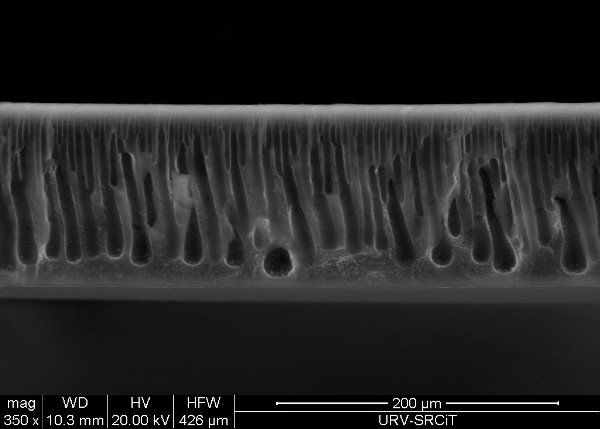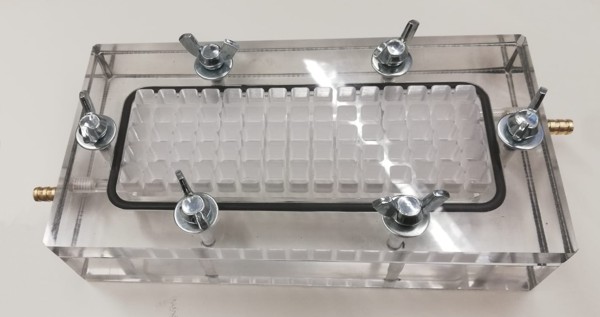DIPA membrane testing

4 November 2019
DIPA stands for diisopropylamine, a secondary amine which industry uses to remove carbon dioxide (CO2) from combustion and flue gases. Adding DIPA to a standard polysulfone membrane may improve its CO2 capturing performance, and this is our next step in the CAPTACO2 project.
The picture shows the microscopy of one of the membranes that have been prepared by adding DIPA to the polysulfone. It is the microscopy of a transversal cut, which also shows the microvoids connecting both sides of the membrane.
CAPTACO2 project uses these membranes in the following way: the external side of the membrane is in contact with the atmosphere while the internal side is in contact with an hydroxide. Atmospheric carbon dioxide then crosses the membrane through the microvoids and mix the hydroxide, forming a carbonate.
The testing includes several membrane alternatives, depending on DIPA concentration, membrane thickness and precipitation method. A total of nine different membranes will be tested.
The picture below shows the new testing module that will be used. It has a much higher surface and so will permit a better CO2 capture study.













